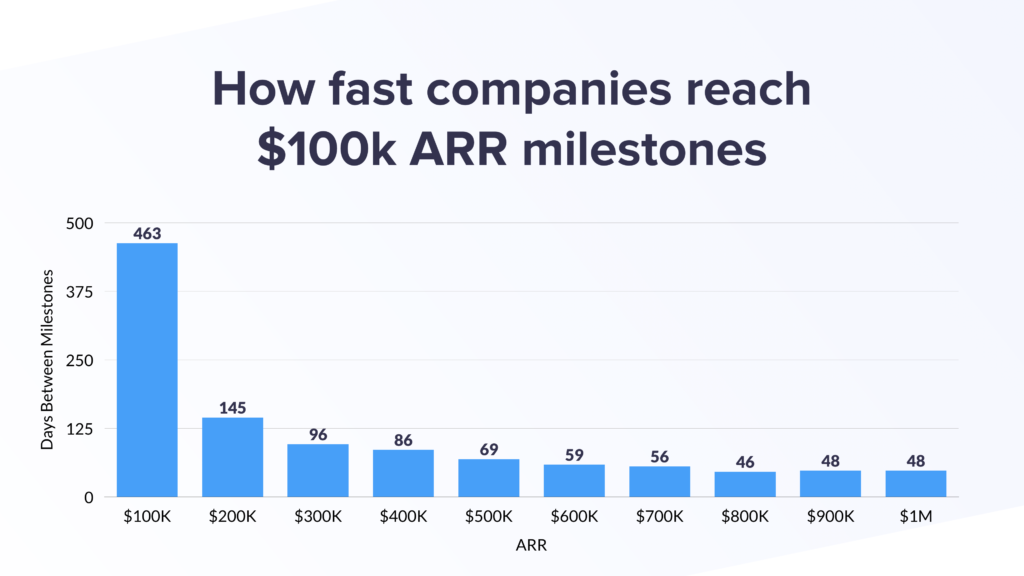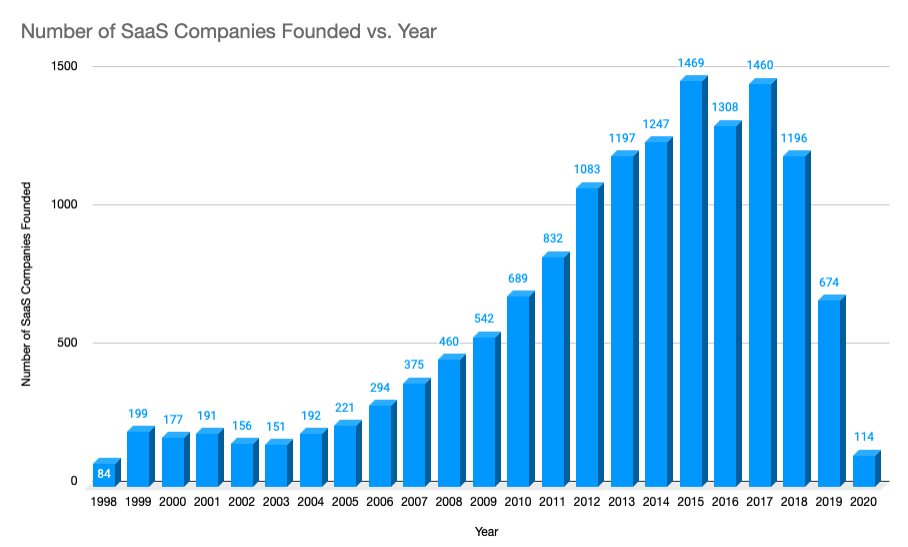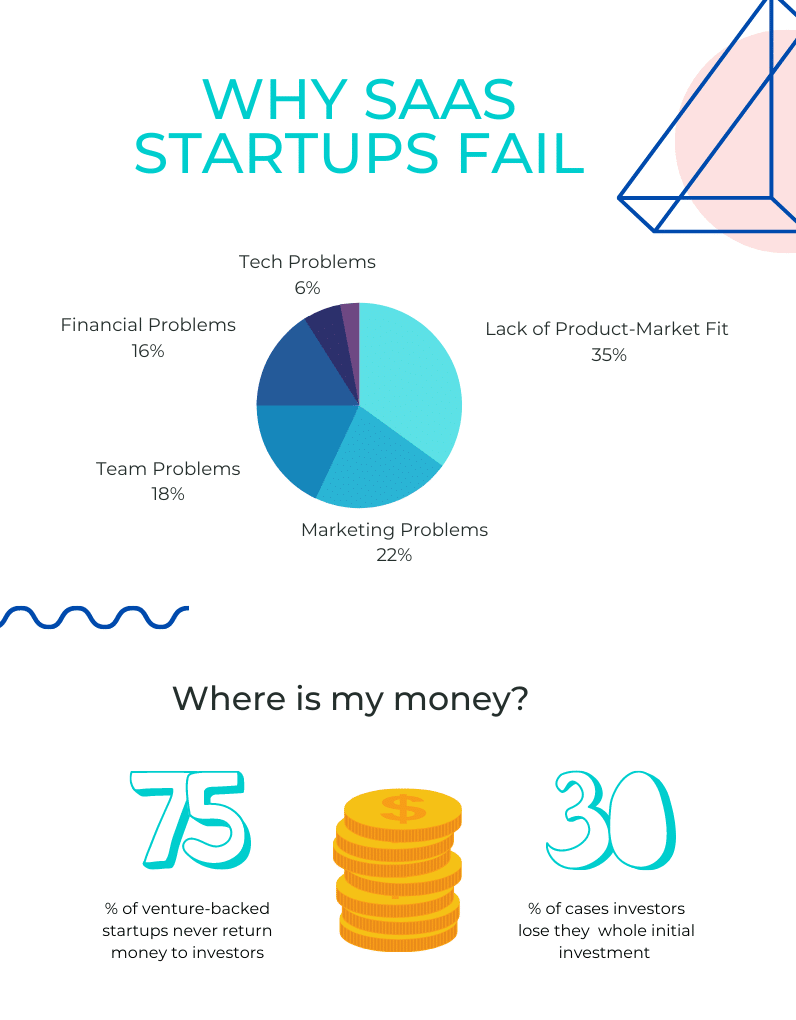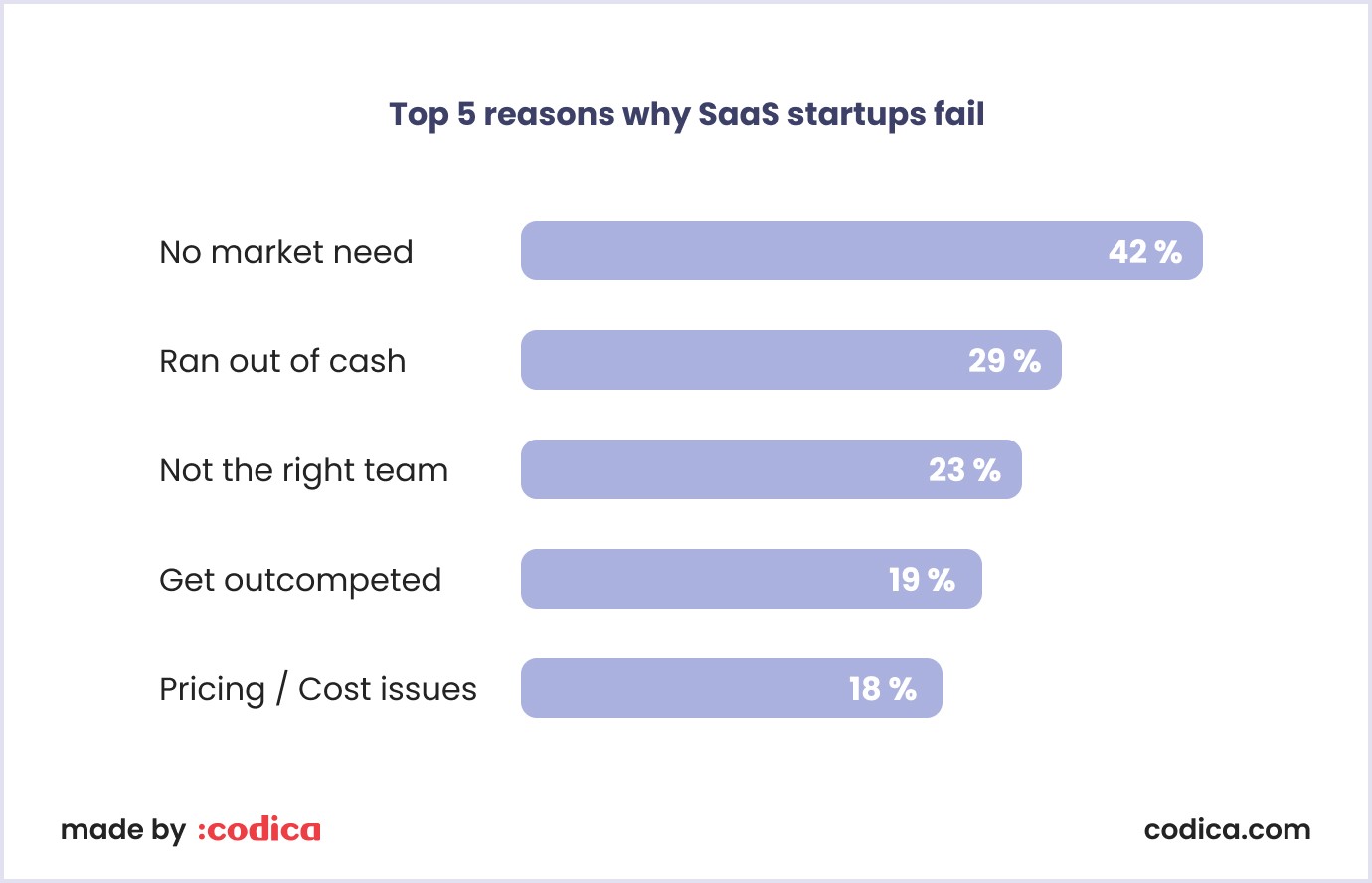So you’ve got a brilliant idea for a Software-as-a-Service (SaaS) company, and you’re eager to dive into the world of entrepreneurship. But before you take that leap, it’s important to be aware of the reality that awaits you. In this article, we’ll take a closer look at how many SaaS companies actually fail each year. Brace yourself, because the numbers might surprise you.
Reasons for SaaS Company Failures
Lack of Market Need
One of the primary reasons for SaaS company failures is the lack of market need for their product or service. Many startups are enthusiastic about their innovative ideas and solutions without thoroughly assessing the demand in the market. It is essential to validate the idea and conduct market research to understand if there is a genuine need for the product before investing significant resources into its development.
Insufficient Capital
Insufficient capital is another common reason why SaaS companies fail. Building and scaling a technology company requires significant financial investment, and many startups struggle to secure the necessary funding. Without adequate capital, it becomes challenging to hire a skilled workforce, develop a robust product, and effectively market and sell the offering. Insufficient cash flow can lead to a lack of resources to sustain operations, resulting in failure.
Ineffective Business Model
A flawed or ineffective business model can quickly lead to the downfall of a SaaS company. Some startups fail to monetize their product effectively or price it inaccurately, leading to unsustainable revenue streams. Having a clear and well-defined business model is crucial for generating revenue and achieving profitability. Additionally, a lack of scalability in the business model can hinder growth and make it difficult for the company to adapt to changing market conditions.
Poor Customer Acquisition Strategies
Without a solid customer acquisition strategy, SaaS companies can struggle to attract and retain customers. Inadequate marketing efforts, ineffective sales techniques, and struggles with lead generation can result in low customer acquisition rates. It is crucial for companies to invest in targeted marketing campaigns, develop strong sales teams, and focus on building relationships with potential customers to drive growth.
Technical Issues and Inadequate Product Development
SaaS companies that fail to provide a reliable and high-quality product often face significant challenges. Technical issues such as frequent downtime, slow performance, and security vulnerabilities can lead to customer dissatisfaction and churn. Inadequate product development, including a lack of essential features or poor user experience, can also hinder success. Continuous improvement and investment in product development are vital for meeting customer needs and staying competitive.
Inability to Adapt to Changing Industry Trends
The SaaS industry is constantly evolving, and companies that fail to adapt to changing trends can quickly become outdated. Emerging technologies, shifts in customer preferences, and new market dynamics require companies to be flexible and agile. Failure to recognize and respond to these changes can result in a loss of market share and customers to more innovative competitors.
Strong Competition
Competition in the SaaS industry is fierce, and companies that fail to differentiate themselves often struggle to survive. The presence of well-established players with strong brand recognition and extensive customer bases can make it challenging for new entrants to gain traction. Companies need to develop a unique value proposition, provide superior customer experiences, and continually innovate to stand out in a crowded market.
Ineffective Leadership and Management
Leadership and management play a crucial role in the success or failure of a SaaS company. Ineffective decision-making, poor strategic planning, and a lack of communication can have a detrimental impact on the organization. Strong leaders who can inspire and motivate employees and effectively steer the company through challenging times are essential for long-term success.
Lack of Scalability
Scalability is a critical factor in the success of SaaS companies. If a company’s product or service cannot scale to meet increasing demand or effectively serve a growing customer base, it can hinder growth and ultimately lead to failure. It is crucial for companies to design their infrastructure, processes, and systems with scalability in mind to accommodate future growth and expansion.
Legal and Regulatory Challenges
Navigating the complex landscape of legal and regulatory requirements can be challenging for SaaS companies. Failure to comply with industry regulations and data privacy laws can result in severe consequences, including fines and reputational damage. Companies must stay informed about relevant regulations, invest in legal counsel, and implement robust compliance measures to mitigate legal and regulatory risks.
Industry Statistics and Failure Rates
Lack of Reliable Data
Obtaining accurate and reliable data on SaaS company failure rates can be challenging. The nature of the industry, with many startups operating in a small or niche market, makes it difficult to gather comprehensive data. Additionally, some companies may quietly shut down without any public announcement, further complicating data collection efforts.
Varying Definitions of Failure
Another challenge is the varying definitions of failure within the SaaS industry. Some sources may define failure as complete shutdown and liquidation, while others may consider it as a company ceasing operations but potentially being acquired or pivoting to a different business model. The lack of standardization in defining failure makes it challenging to compare data across different sources and accurately assess failure rates.
Estimates and Studies on Failure Rates
Despite the challenges in obtaining accurate data, several estimates and studies provide valuable insights into SaaS company failure rates. A study by CB Insights revealed that 70% of startups fail due to premature scaling, lack of market demand, or running out of cash. Another report by the Small Business Administration indicated that around 20% of startups fail within the first year, 50% within five years, and 70% within ten years.
Factors Influencing Failure Rates
Several factors contribute to the failure rates of SaaS companies. As previously discussed, factors such as lack of market need, insufficient capital, and ineffective business models significantly impact the likelihood of failure. Additionally, market competition, poor product-market fit, and challenges in customer acquisition and retention all contribute to failure rates.
Lessons from Previous SaaS Industry Downturns
Previous downturns in the SaaS industry provide valuable lessons for companies looking to avoid failure. The dot-com bubble of the late 1990s and the economic recession in 2008 resulted in numerous SaaS company failures. Companies that survived these downturns often emphasized the importance of financial discipline, focusing on profitable customer segments, and maintaining a strong customer base through exceptional customer experiences.

This image is property of baremetrics.com.
Stage of Evolution and Failure Rates
Early-Stage Startups
Early-stage startups face unique challenges and typically have higher failure rates compared to more mature companies. Limited resources, untested business models, and the need for rapid growth and customer acquisition can make it difficult for startups to find their footing. However, innovative ideas, agility, and the potential for disruption also offer opportunities for success.
Mature and Established Companies
Mature and established SaaS companies typically have lower failure rates compared to early-stage startups. These companies have overcome initial challenges, developed a solid customer base, and established a strong market position. However, staying competitive and adapting to changing market conditions remain critical to long-term survival and continued growth.
Transitioning to Publicly Traded Companies
The transition from a private to a publicly traded company poses unique challenges. Increased scrutiny from shareholders, regulatory requirements, and the need to meet quarterly financial expectations can be demanding for SaaS companies. Effective leadership, financial transparency, and a well-defined growth strategy are crucial for successfully navigating this transition.
Differences in Failure Rates by Industry Verticals
Failure rates in the SaaS industry can vary significantly by industry verticals. Some verticals, such as healthcare and finance, have stricter regulatory requirements, making it more challenging for startups to enter and succeed. Additionally, verticals with saturated markets and strong competition may have higher failure rates compared to emerging or niche markets.
Challenges for SaaS Companies
Customer Churn and Retention
Customer churn, or the rate at which customers stop using a product or service, is a significant challenge for SaaS companies. High churn rates can hinder revenue growth and profitability. It is crucial for companies to understand the reasons behind customer churn and develop effective retention strategies such as exceptional customer support, regular engagement, and continuous product improvement.
Achieving Product-Market Fit
Finding the right product-market fit is essential for the success of a SaaS company. Companies need to understand their target market’s needs and pain points and develop a product that addresses those challenges effectively. Continuous feedback from customers, market research, and agile development processes are crucial in achieving and maintaining product-market fit.
Margin Pressure and Pricing
Pricing pressure is a common challenge in the SaaS industry. With the increasing number of competitors and price-sensitive customers, companies face pressure to lower their prices to remain competitive. However, pricing too low can result in unsustainable profit margins and limitations in investing in product development and customer acquisition. Striking the right balance between pricing, value proposition, and profitability is crucial.
Customer Onboarding and Adoption
Successful customer onboarding and adoption are critical for long-term customer satisfaction and retention. Companies must provide clear and intuitive onboarding processes, comprehensive training materials, and ongoing support to ensure customers can effectively implement and utilize their product. Failure to onboard customers properly can result in low adoption rates, increased churn, and negative customer experiences.
Scaling Sales and Marketing
Scaling sales and marketing efforts is a challenge as SaaS companies grow. Scaling requires careful planning, investment in sales and marketing infrastructure, and the development of efficient processes. It is crucial for companies to strike the right balance between sales and marketing spend, optimize lead generation strategies, and build a high-performing sales team to drive revenue growth.

This image is property of cardconnect.com.
Impact of COVID-19 on SaaS Companies
Acceleration of Digital Transformation
The COVID-19 pandemic has accelerated the digital transformation across industries, creating both challenges and opportunities for SaaS companies. The increased reliance on remote work and the need for digital solutions has led to higher demand for SaaS products in areas such as collaboration, video conferencing, and cybersecurity.
Increased Demand in Certain Sectors
While the pandemic caused disruptions in some industries, it created increased demand in others. SaaS companies operating in healthcare, e-commerce, and remote learning, for example, experienced a surge in demand as organizations and individuals sought digital solutions to adapt to the new normal.
Disrupted Sales Processes and Revenue Streams
COVID-19 also disrupted sales processes and revenue streams for many SaaS companies. With restrictions on in-person meetings and events, companies had to pivot to virtual sales and marketing strategies. Uncertainty in the business environment also impacted customer decision-making, resulting in delayed purchases or cancellations.
Changing Customer Priorities and Budgets
The pandemic caused a shift in customer priorities and budgets. Many organizations focused on cost optimization and reducing expenditures, which could impact the willingness to invest in new SaaS solutions. Understanding and adapting to the changing needs and financial constraints of customers became crucial for SaaS companies during this period.
Shifts in Remote Work and Collaboration Tools
The widespread adoption of remote work and collaboration tools presented both opportunities and challenges for SaaS companies. The demand for solutions that facilitate remote communication, project management, and team collaboration soared. However, the increased competition in these areas also intensified, requiring companies to differentiate themselves and provide unique value propositions.
Survival Strategies for SaaS Companies
Clear Understanding of Customer Needs
Having a clear understanding of customer needs is fundamental to the survival of a SaaS company. Companies must conduct market research, engage in constant customer feedback, and stay attuned to industry trends to ensure they are addressing evolving customer needs effectively. This understanding can drive product development, marketing strategies, and customer acquisition efforts.
Building a Strong Financial Foundation
The ability to build and maintain a strong financial foundation is critical for the survival and growth of a SaaS company. This involves careful financial planning, accurate forecasting, and effective cash flow management. SaaS companies should also strive for profitability and demonstrate a sustainable business model to attract investors and secure funding to fuel growth.
Continuous Product Innovation
Continuous product innovation is essential for staying competitive and meeting evolving customer expectations. SaaS companies need to invest in research and development, listen to customer feedback, and proactively iterate on their product. By continuously improving and adding value to their offering, companies increase customer satisfaction and loyalty.
Effective Customer Acquisition and Retention Strategies
Effective customer acquisition and retention strategies are vital for the long-term success of a SaaS company. This involves building a strong sales and marketing infrastructure, leveraging modern lead generation techniques, and delivering exceptional customer experiences. Companies must also focus on customer success, providing ongoing support, and ensuring customers achieve their desired outcomes.
Agility and Adaptability in a Changing Market
In a rapidly evolving market like SaaS, agility and adaptability are essential for survival. Companies must have the ability to quickly respond to market dynamics, customer feedback, and emerging trends. This may involve pivoting the business model, entering new markets, or embracing new technologies to stay ahead of the competition.
Investing in Talent and Leadership Development
Investing in talent and leadership development is crucial for building a capable and motivated workforce. SaaS companies need skilled professionals in areas such as product development, sales, marketing, and customer support. Effective leadership and management are also essential for guiding the company through challenges, fostering innovation, and creating a positive and productive work culture.
Building Strong Partnerships and Alliances
Collaborating with strategic partners and building alliances can provide valuable opportunities for SaaS companies. Partnering with complementary businesses can expand reach, access new customer segments, and drive revenue growth. Leveraging partner ecosystems can also enhance product offerings and provide additional value to customers.
Diversification and Expansion into New Markets
Diversification and expansion into new markets can mitigate risks and create new growth opportunities for SaaS companies. By targeting different industry verticals or geographical regions, companies can tap into untapped markets and reduce reliance on a single customer segment. However, diversification must be approached strategically to ensure resources are effectively allocated.
Investing in Data Security and Privacy Measures
Data security and privacy concerns have become increasingly important in the SaaS industry. Companies must invest in robust data security measures, comply with relevant regulations, and prioritize customer privacy. Demonstrating a commitment to protecting customer data can build trust and differentiate a company from competitors.
Monitoring and Responding to Competitive Threats
In a highly competitive industry like SaaS, monitoring and responding to competitive threats is essential. Companies must stay abreast of competitor offerings, pricing strategies, and market positioning. By understanding the competitive landscape, companies can proactively respond, differentiate their offerings, and leverage their unique strengths.

This image is property of kitrum.com.
Conclusion
The SaaS industry is dynamic and continually evolving, presenting both challenges and opportunities for companies. The high failure rates experienced by some SaaS companies highlight the importance of proper planning, execution, and adaptability. By understanding the reasons behind failures, leveraging industry trends and insights, continuously learning, and focusing on long-term success strategies, SaaS companies can increase their chances of survival and thrive in the ever-changing market.
